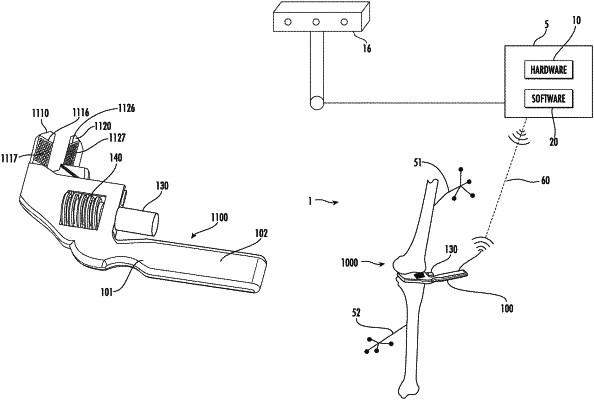| CPC A61B 5/4533 (2013.01) [A61B 5/4585 (2013.01); A61B 17/1764 (2013.01); A61B 34/10 (2016.02); A61B 2562/0247 (2013.01); A61B 2562/046 (2013.01)] | 10 Claims |

|
1. A joint evaluation device arranged and configured to assess soft tissues of a knee joint including a tibia and a femur, the joint evaluation device comprising:
a body including a handle configured to be grasped by a user;
a first engagement portion fixedly coupled to the body;
a second engagement portion moveably coupled to the body;
an actuator coupled to the body and configured to axially move the second engagement portion relative to the first engagement portion such that, in use, the second engagement portion moves laterally towards the first engagement portion along the body through the knee joint to create a relative movement between the patient's tibia and femur; and
a force measurement device arranged and configured to evaluate a force applied between the first and second engagement portions required to move the second engagement portion laterally towards the first engagement through the knee joint;
wherein the force measurement device comprises:
a first face formed on the first engagement portion, the first face arranged and configured at an oblique angle to a direction of the lateral movement of the second engagement portion towards the first engagement portion, the first face including an array of force sensors for contacting the femur;
a second face formed on the second engagement portion, the second face arranged and configured at an oblique angle to the direction of the lateral movement of the second engagement portion towards the first engagement portion, the second face including an array of force sensors for contacting the femur; and
the first and second faces are configured to contact the femur simultaneously.
|